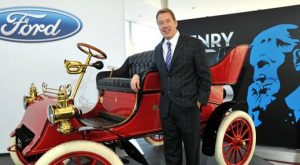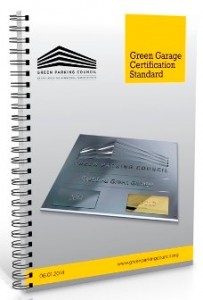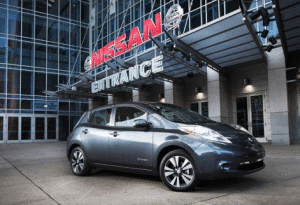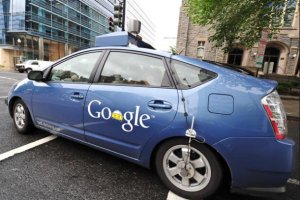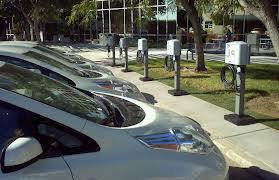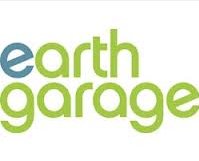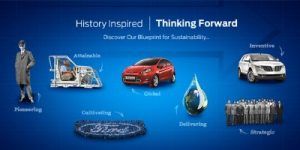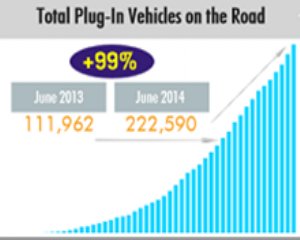 by Jon LeSage, editor and publisher, Green Auto Market
by Jon LeSage, editor and publisher, Green Auto Market
Here’s my take on the 10 most significant and interesting occurrences during the past week…….
- Plug-in vehicles are continuing to see strong sales increases – nearly double what they were in total US sales a year ago, according to data from Electric Drive Transportation Association (EDTA). The total number of plug-in electric vehicles (EVs) sold since their launch in late 2010 reached 222,590 by the end of June 2014; that’s 99% growth over the 111,962 units sold through the end of June 2013. Plug-in hybrid sales had more than 1,500 units sold for the month of June 2014 – 6,511 plug-in hybrids versus 4,982 battery electric vehicles. EVs are seeing stronger initial returns in their first three-plus years on the market compared to hybrids in their first years, according to a recent study by IHS Automotive. Why is that? As far as I’m concerned, it comes down to a few decisive factors: there are a lot more EV product offerings than the early days of hybrids and they’re a diverse mix; some of these cars have seen high consumer interest early on, especially the Tesla Model S and the Toyota Prius Plug-in Hybrid. Leasing and purchasing incentives are reducing a big chunk of the EV ownership costs, making the acquisition decision easier; charging stations are becoming more plentiful in several metro markets with high EV ownership; the cost of home charging station units and their installation has been coming down. Workplace charging is getting better, as is retail store charging. (Multi-unit dwelling charging stations at apartments and condos need more support, though – FYI.)
- Does the layout of Green Auto Market look different to you? It did change over last week using a new template on WordPress; it’s designed to be more responsive to mobile devices like the iPhone, Android, and iPad. I do like reading e-newsletters easily from my phone, and have had that request made by a few readers. You should also know about two new social media sites for Green Auto Market — @GreenAutoMkt on Twitter and a new Companies page on LinkedIn. Some people are getting a lot out of Google+ and Facebook with its 1.5 billion users; as for me, Twitter and LinkedIn make the most sense for connecting with interested and like-minded people.
- China is a huge, important market to enter, but watch out for trademark infringement lawsuits. Zhan Baosheng said he registered the rights to the Tesla name before Tesla Motors entered the Chinese market. In the filing, Baosheng requested that Tesla shut down its showrooms, service centers, and superchargers; plus stop all sales and marketing activity in the country and pay him about $3.9 million in compensation.
- Clean diesel cars continue to grow in popularity with US car buyers – sales increased by 25% during the first six months of this year. Sales increases seem to reflect the number of diesel vehicles now available to consumers – 27 cars and SUVs, nine vans, and 10 pickups come in diesel engine versions to the US market. Getting great mileage through advanced technologies like turbocharged direct injection (TDI) seem to be helping, too.
- Comments filed by an impressive list of NPOs called for several changes to the Federal Trade Commission’s Fuel Economy Advertising Guide. American Council for an Energy-Efficient Economy, Center for Auto Safety, Consumer Federation of America, Consumers Union, Natural Resources Defense Council, Public Citizen, Safe Climate Campaign, Sierra Club, and Union of Concerned Scientists joined together on the comments. The groups called for the US Environmental Protection Agency (EPA) miles per gallon ratings to be included in passenger vehicle advertising, the banning of anything but EPA ratings in ads, and outlined the most effective ways to present MPG ratings.
- Sandia National Laboratories released a study finding that a larger network of hydrogen fueling stations may soon go live. The study says that 14 of the 70 California gas stations reviewed for integration of hydrogen into existing gas stations can accept hydrogen fuel now; an additional 17 stations could accept hydrogen with property expansions that would comply with National Fire Protection hydrogen technologies code.
- Propane Education & Research Council (PERC) is hosting a webinar on July 17th at 12:00 EST. ROUSH CleanTech will provide the guest speakers discussing the usage and success of propane autogas; how switching can benefit your industry; and how to conduct proper use and handling, maintenance, and service requirements of propane autogas vehicles.
- Tesla Motors now can officially sell its cars in the state of Pennsylvania, now that Gov. Tom Corbett has signed the bill into law. Tesla had been battling with dealer associations, and eventually both the state House and Senate voted to allow Tesla to open up to five retail stories in Pennsylvania.
- Nissan is taking on Tesla Motors CEO Elon Musk on how charging should be paid for. “No Charge to Charge” program is being expanded by Nissan, from about 10 US markets to more than 25 by next June, with the possibility of more in the future. New Leaf buyers can join the program and get two free years of charging at any participating station, many of which will offer DC quick chargers. It’s being carried out through a partnership between Nissan and PlugShare. “No Charge to Charge” is using PlugShare’s charging station locator and EV driver community app with participating stations.10.
- The US Environmental Protection Agency may be rethinking fuel economy ratings — automakers may have to road test their vehicles to verify mileage claims posted on window stickers. The EPA has a proposal requesting more accurate information in the wake of Ford, Hyundai, and Kia overstating fuel efficiency on some of its models. “Some automakers already do this, but we are establishing a regulatory requirement for all automakers,” Chris Grundler, director of the EPA’s Office of Transportation and Air Quality, told The Wall Street Journal.




